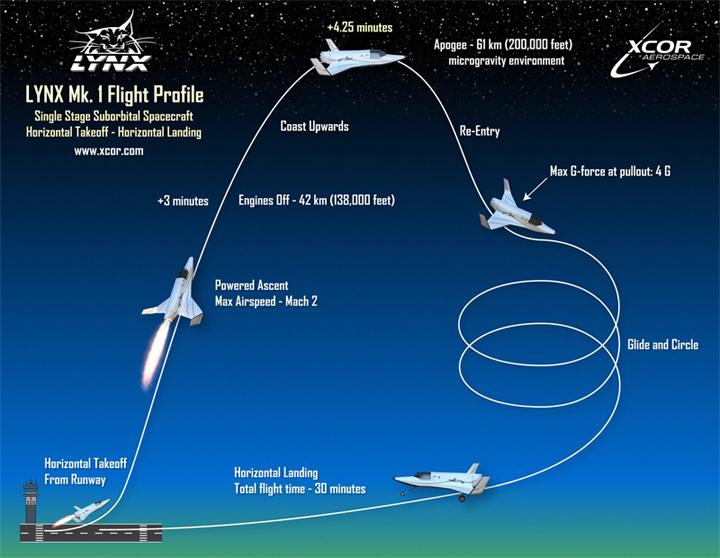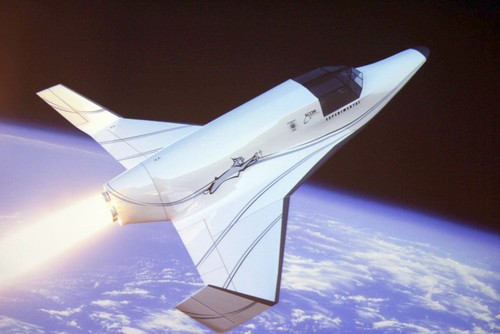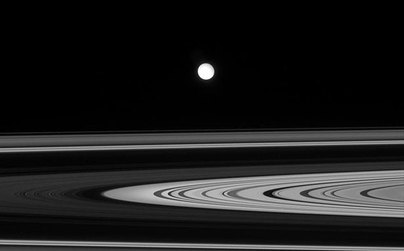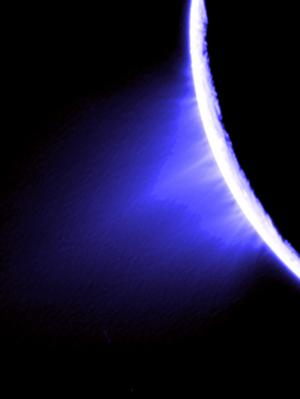|
|
|||||||||||||||||||||||||||||||
|
Xcor Space Unveiled
California firm unveils two-seat spaceship A California aerospace company plans to enter the space tourism industry with a two-seat rocket ship capable of suborbital flights to altitudes more than 60 kilometres above the Earth. The Lynx, about the size of a small private plane, is expected to begin flying in 2010, according to developer Xcor Aerospace, which planned to release details of the design at a news conference Wednesday. The company also said that, pending the outcome of negotiations, the Air Force Research Laboratory has awarded it a research contract to develop and test features of the Lynx. No details were released. Xcor's announcement comes two months after aerospace designer Burt Rutan and billionaire Richard Branson unveiled a model of SpaceShipTwo, which is being built for Branson's Virgin Galactic space tourism company and may begin test flights this year. Xcor intends to be a spaceship builder, with another company operating the Lynx and setting prices. The Lynx is designed to take off from a runway like a normal plane, reach a top speed of Mach 2 and an altitude of 61,000 metres, then descend in a circling glide to a runway landing. Shaped something like a bulked-up version of the Rutan-designed Long-EZ homebuilt aircraft, its wings will be located toward the rear of the fuselage, with vertical winglets at the tips.
 Powered by clean-burning, fully reuseable, liquid-fuel engines, the Lynx is expected to be capable of making several flights a day, Xcor said. "We have designed this vehicle to operate much like a commercial aircraft," Xcor Chief Executive Officer Jeff Greason said in a statement. Greason said the Lynx will provide affordable access to space for individuals and researchers, and future versions will offer improved capabilities for research and commercial uses. Xcor has spent nine years developing rocket engines in a facility down the flightline from Rutan's Scaled Composites LLC at the Mojave Airport north of Los Angeles. It has built and flown two rocket-powered aircraft. SpaceShipTwo is being developed on the success of SpaceShipOne, which in 2004 became the first privately funded, manned rocket to reach space, making three flights to altitudes between 100 kilometres and 111 kilometres and winning the $10 million Ansari X Prize.
 Powered by a hybrid engine Ð the gas nitrous oxide combined with rubber as a solid fuel Ð SpaceShipTwo will be flown by two pilots and carry up to six passengers who will pay about $200,000 apiece for the ride. Like its predecessor, SpaceShipTwo will be taken aloft by a carrier airplane and then released before firing its rocket engine. Virgin Galactic says passengers will experience about 4 1/2 minutes of weightlessness and will be able to unbuckle themselves to float in the cabin before returning to Earth as an unpowered glider. Xcor's Lynx also is intended to return as a glider but with the capability of restarting its engine if needed. Organic Life found on Saturn's Moon
An international spacecraft that dove through geysers erupting from the surface of a Saturn moon found organic matter, one of many ingredients that make an environment hospitable to extraterrestrial life, scientists said Wednesday. The discovery excited mission team members, who say it's a marker for further research into whether the icy satellite Enceladus has such an environment. The chemical analysis by the unmanned Cassini spacecraft revealed Enceladus's interior is similar to that of a comet. While the jet plumes were mostly water vapour, the probe found traces of methane and simple organic compounds, said Hunter Waite of the Southwest Research Institute, who is the principal investigator of one of the spacecraft's instruments. "We clearly have the organics and are closing in on the question of liquid water in the interior," Waite said. In 2005, Cassini spied gigantic geysers spewing from fractures known as tiger stripes on the moon's south pole. Scientists theorized reservoirs of liquid water below the surface were likely supplying the ice and vapour seen in the plumes. The flyby two weeks ago took Cassini within 50 kilometres of the surface of Enceladus, the shiniest object in the solar system. During the encounter, the spacecraft barrelled through the icy geyser plumes at more than 50,000 kilometres an hour and an altitude of 200 kilometres.
Detailed heat maps of the lunar surface revealed the south pole is warmer than previously thought. Temperature measurements show the region is at least -57 degrees C Ð 35 degrees hotter than previously known. Cassini scientist John Spencer of the Southwest Research Institute said the relatively high temperatures likely indicate liquid water may lurk beneath the surface. Scientists generally agree the presence of water, organic compounds and a stable heat source are needed to support primitive life. Scientists not involved with the mission said while the discovery of organics is important in the search for extraterrestrial life, the fact they resemble comet material casts doubt on whether liquid water is present. "Suppose they had seen complex organics...That would be interpreted to mean that liquid water was present and that chemical reactions had gone forward toward forming life," said Bruce Jakosky, an astrobiologist at the University of Colorado. "That we don't see those things suggests that liquid water is not abundant or that energy sources are not present," he said.
|
|
||||||||||||||||||||||||||||||
|
Website Design + SEO by designSEO.ca ~ Owned + Edited by Suzanne MacNevin | |||||||||||||||||||||||||||||||


